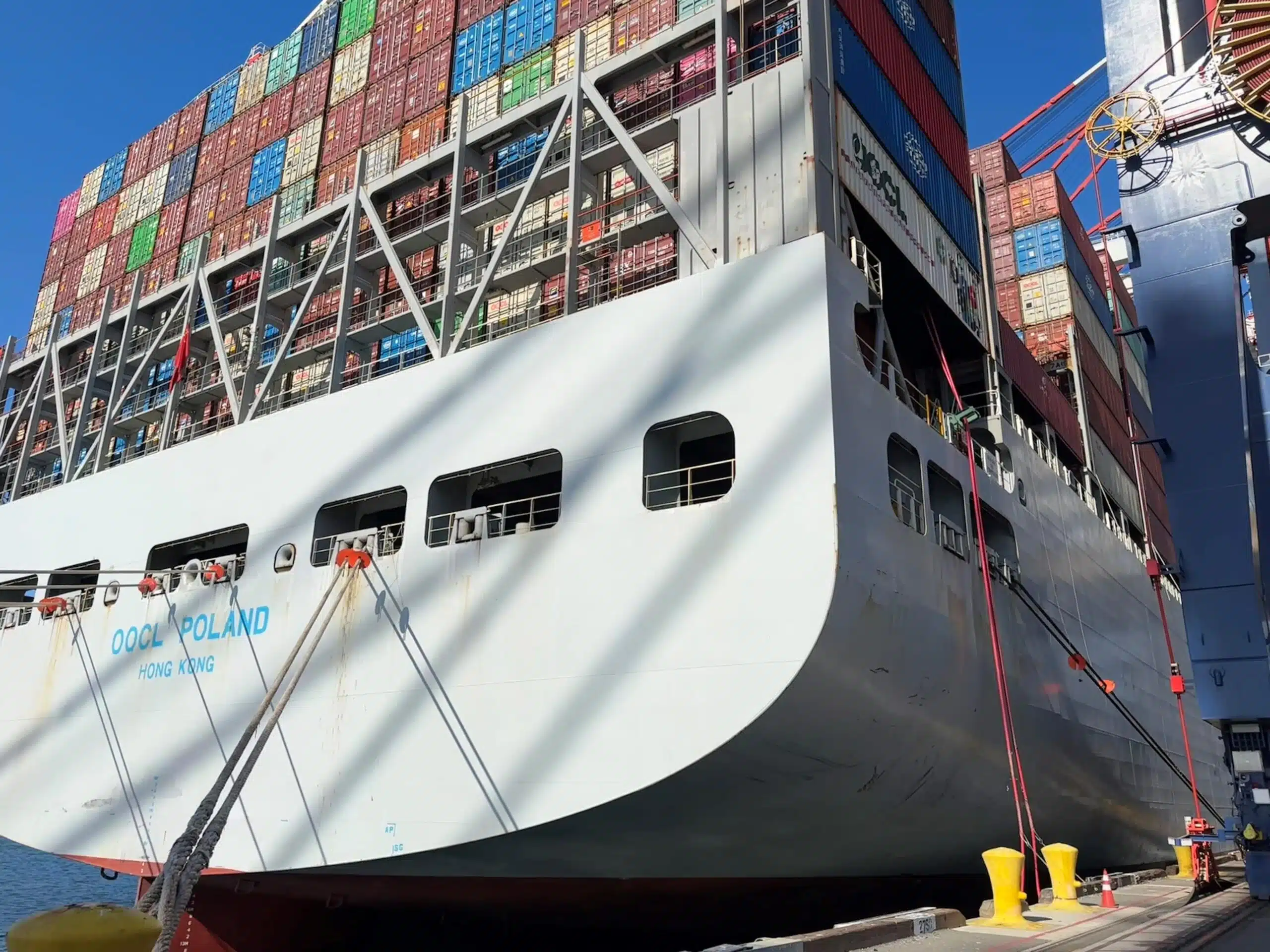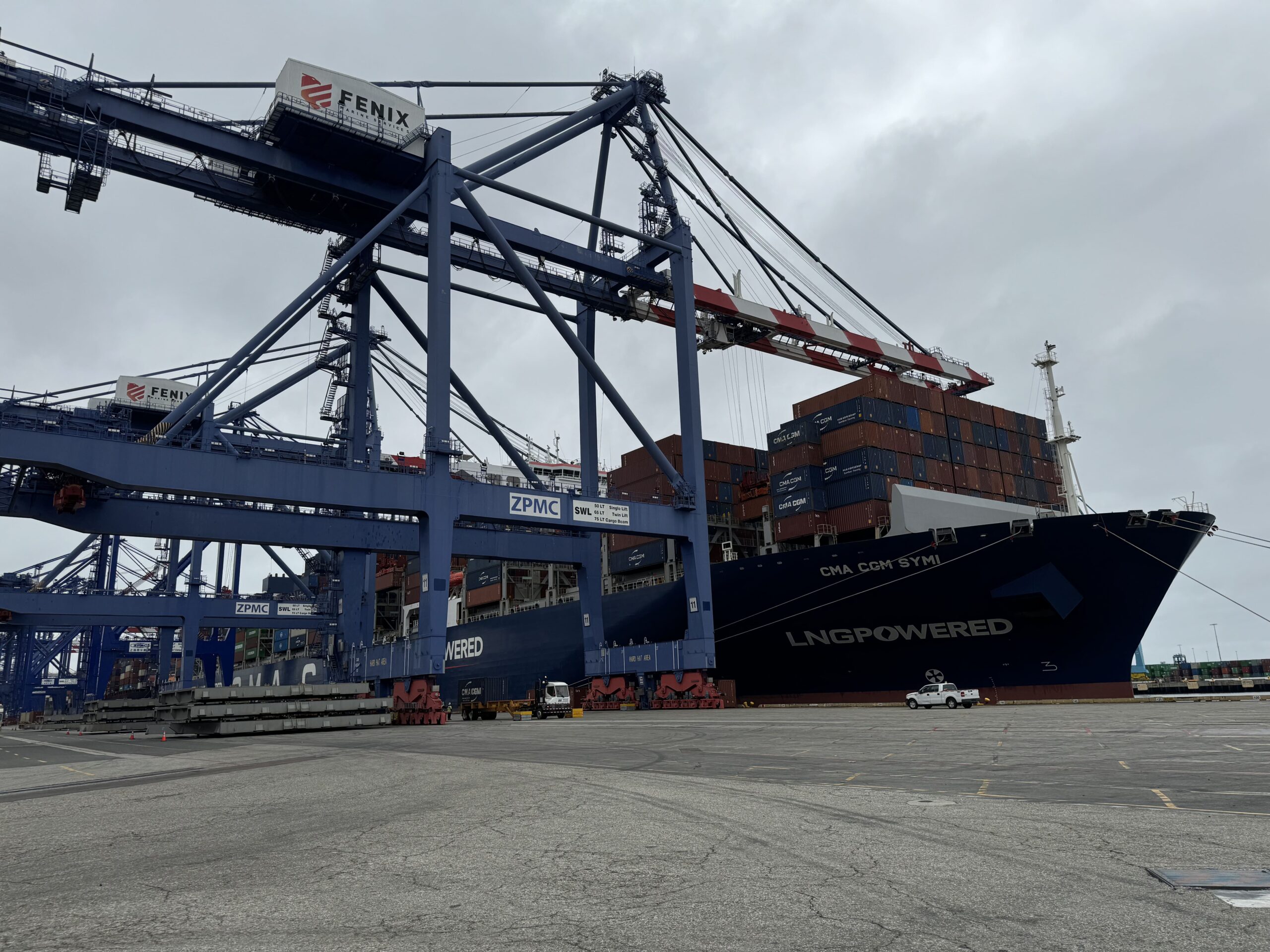- June 24, 2025
- Perspectives, Trending Topics
Electrification: Bringing Ports into a Cleaner, More Sustainable Future


Kent Sayler, PE, LEED AP BD+C
Electrical Engineer
In traditional port container terminals, nearly all the necessary machinery has historically been powered by diesel fuel, including the gantry cranes and top handlers that help move and stack cargo, the vehicles and forklifts that shuttle it from place to place within the terminal, the cranes that load the cargo onto the rail, and even the container ships themselves.
With an industry-wide shift towards modernization, mandates from the California Air Resources Board (CARB), and other domestic and international initiatives to transition from diesel, many port owners are looking to fully electrify their terminal—converting energy-consuming devices or systems from non-electric sources of energy to electricity. Read on to learn more about electrification at ports, its benefits, challenges to keep in mind, and what it means for the future of the ports and maritime industry.
Advantages of Electrification
The main benefit of electrification at ports is sustainability. With this new source of power, ports are poised to be compliant with existing and future industry regulations. The 2014 mandate from CARB, for example, initially required 50% of a fleet’s visit to a terminal be on shore power, which has now been ramped up to 100%. More recently, the San Pedro Bay Ports Clean Air Action Plan (CAAP) established zero-emission goals for cargo handling by 2030, including a master plan for certain ports to develop fully electrified facilities. Further targets have also been set for achieving zero emissions by 2035 for all other equipment used on-site. Additional objectives aim to reduce greenhouse gas levels by 2040 and by 2050 encompass on-road trucks entering the ports.
By transitioning from diesel to electric power, port owners and operators will reduce their carbon emissions and increase their sustainability, helping decarbonize the supply chain and reach their emissions reduction targets. For example, the Port of Long Beach, which is part of the Clean Air Action Plan, has reduced diesel particulate emissions by 92% since 2005 through electrification and in combination with vessel pollution reduction, a clean trucking program, and other green initiatives.
With decreased or eliminated carbon emissions, communities around the ports are positively impacted, helping ports become good stewards of the community and maintain positive relationships with local governments. Additionally, electrification can also lead to a cleaner, more efficient, and modernized terminal that reflects the future of the ports and maritime industry.
Electrification Challenges to Understand
Despite the long-term benefits of electrification, there are also key challenges to recognize before implementation. For example, if the electrified equipment is battery-powered, it must be charged to perform—which could negatively impact the local power grid. Charging at peak times, namely before and after typical working hours and during lunch breaks, could strain the power grid. This not only can create problems for the ports themselves but also for their serving utilities. However, potential grid impacts can be reduced with Battery Energy Storage Systems (BESS) or other distributed generation, which will require careful planning due to not only their installation costs, but the amount of space these systems take up at the container terminal.
Implementing electrification is an expensive process, but incentives are available from the federal government, such as the recent Clean Ports Program, which offered $3 billion in funding for zero-emission port equipment and infrastructure to 53 applicants nationwide. Other funding opportunities include—but are not limited to—grants from the U.S. Department of Transportation Port Infrastructure Development Program, the California State Transportation Agency, and the Carl Moyer Memorial Air Quality Standards Attainment Program.
The Future of the Ports Industry
As the ports industry continues to change, electrification remains the most viable option for modernization. California is leading the way as the first state to require shore-to-ship power, with similar systems catching on in Washington, Florida, Texas, and the Northeast. This, in turn, is inducing ports equipment manufacturers to develop prototypes for new products that are poised to become the national standard.

In concert with electrification, there is a push for greater automation in the ports industry. Most automated equipment by nature is electrified, making the two trends closely intertwined. This creates more efficient terminals that can move freight faster and ultimately generate more revenue. The Long Beach Container Terminal in the Port of Long Beach is a prime example of this, being both fully electrified as well as the largest automated container terminal on the West Coast. It is also well on its way to achieving zero emissions by 2030 with its plans to comply with the CAAP.
With this chance to upgrade a port’s fleet and modernize its terminals, port owners and operators can leverage these benefits for increased profitability and sustainability, ultimately paving the way towards a greener future.
About the Expert

Kent Sayler, PE, LEED AP BD+C
Kent is an electrical engineering consultant specializing in the design of commercial and industrial medium voltage distribution, with an emphasis on systems for ports and harbors facilities, including but not limited to container yards, intermodal yards, shore power, high mast lighting, and terminal automation. With 18 years of experience working with medium voltage infrastructure design, he is well versed in power system design and studies as well as container terminal design for higher education, healthcare, and various private sector environments.
